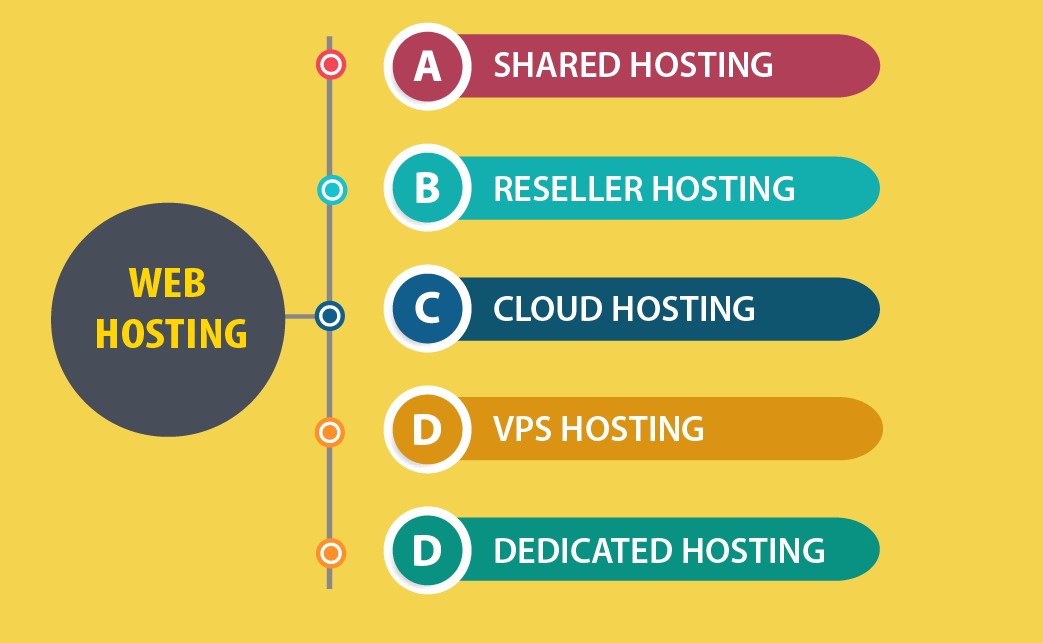There are many factors to take into account when picking a hosting service for your website. The price usually depends on whether you opt for shared hosting, VPS hosting, dedicated hosting, or cloud hosting. Each type has advantages and disadvantages.
This article will clarify the details around these different types of hosting and what to look for in a hosting provider.
Shared Hosting
Shared hosting is the cheapest and most basic type of hosting. A large number of sites share a server, and the costs of the server are distributed among them.
Users of shared hosting have to share bandwidth as well. This is not very convenient for a number of reasons. Your site will slow down if another site on the server suddenly gets a lot more visitors than usual.
If another site on the shared server gets its IP blocked, your site could also be affected. This can happen due to illegal activity or for another reason. The best hosting providers take measures to prevent unlawful activity on their servers, but the risk exists.
VPS Hosting
Virtual Private Server (VPS) users have a unique IP address as well as a server that divides their sites. With this type of hosting, you have greater control over the server and can manage more server features. VPS services also impose a traffic limit, but individuals and small businesses will rarely exceed them.
Dedicated Hosting
Dedicated hosting is the highest-quality hosting, but it’s also the most expensive. The dedicated server is all yours. Bigger companies choose these hosting services to ensure their sites are always accessible and fully secure. If you sign up for Amazon Web Services (AWS), you can save money on this type of hosting. With AWD and similar services, you pay as you go, which helps you keep costs under control.
Cloud Hosting
Cloud hosting prevents the negative consequences of unexpected traffic surges by spreading users’ sites across several servers. The cloud guarantees uptime. Cloud hosting is generally affordable unless your site’s very popular, in which case your hosting expenses will soar.
You don’t necessarily have to sign up with a large, established company – smaller ones can offer decent cloud hosting packages. Most companies charge a fixed rate per month, so your costs can be very predictable.
How to Choose the Right Web Hosting
The amount of expected traffic is crucial. A small site with low traffic will be perfectly fine with shared hosting. If your traffic increases, you’ll need to upgrade to VPS hosting. Most people want traffic to their sites to grow, particularly if they have business websites.
Storage
You need to consider how much disk space you’ll need. You won’t need much if you have few images or multimedia. A standard webpage is only a text file.
How Much Bandwidth
To check how much bandwidth you need, add up your site’s media size and multiply it by the number of visitors to your site. If 10,000 people open a 250 MB site, it will need a bandwidth of 2,500 GB.
Other Features to Consider
Other features to consider include intuitiveness, the cost of registration, support, management features, upgrades, and cancellation. Support, in particular, can be very important. If you don’t have much experience with website management, you’ll need help at one point. Most providers will offer some basic assistance, but coding and other specialized services are hard to come by.
Ideally, your provider should have different support channels: live chat, phone, and email support, as a bare minimum.
You need intuitive management features. Most hosting services use cPanel, which is relatively intuitive, but it’s still a good idea to assess your experience level beforehand.
The Fine Print
Don’t skip the fine print because you might end up being tied down with a long-term contract. Some hosting providers might offer a discount if you pay upfront.







